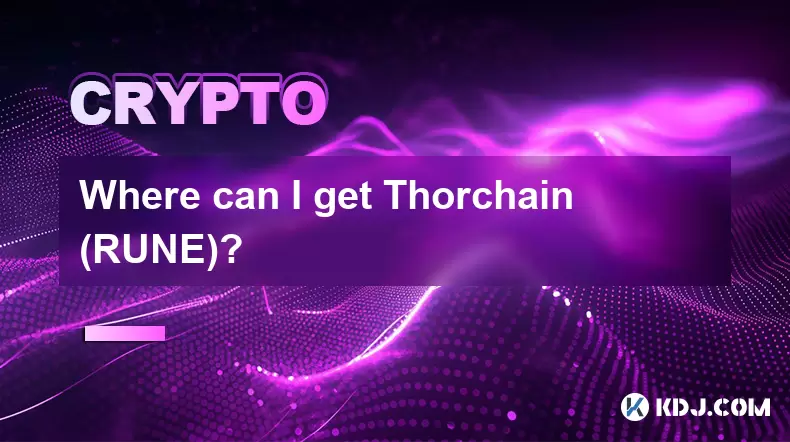-
 Bitcoin
Bitcoin $116700
0.24% -
 Ethereum
Ethereum $3973
4.34% -
 XRP
XRP $3.283
7.68% -
 Tether USDt
Tether USDt $1.000
0.01% -
 BNB
BNB $789.8
2.27% -
 Solana
Solana $176.2
3.31% -
 USDC
USDC $0.9999
0.00% -
 Dogecoin
Dogecoin $0.2238
5.14% -
 TRON
TRON $0.3389
-0.51% -
 Cardano
Cardano $0.7907
4.03% -
 Stellar
Stellar $0.4527
10.02% -
 Hyperliquid
Hyperliquid $41.07
4.27% -
 Sui
Sui $3.794
1.77% -
 Chainlink
Chainlink $19.49
10.40% -
 Bitcoin Cash
Bitcoin Cash $580.9
0.74% -
 Hedera
Hedera $0.2617
4.32% -
 Avalanche
Avalanche $23.41
3.67% -
 Ethena USDe
Ethena USDe $1.001
-0.03% -
 Litecoin
Litecoin $122.4
1.38% -
 Toncoin
Toncoin $3.364
1.49% -
 UNUS SED LEO
UNUS SED LEO $8.988
0.37% -
 Shiba Inu
Shiba Inu $0.00001295
2.82% -
 Uniswap
Uniswap $10.62
5.75% -
 Polkadot
Polkadot $3.922
4.46% -
 Dai
Dai $1.000
0.01% -
 Bitget Token
Bitget Token $4.494
2.15% -
 Monero
Monero $268.0
-1.30% -
 Cronos
Cronos $0.1523
3.68% -
 Pepe
Pepe $0.00001127
4.43% -
 Aave
Aave $285.4
4.85%
10 free income guides for cryptocurrency beginners!
Explore 10 free guides for crypto beginners on income methods like staking, mining, trading, and more, to navigate the rewarding world of cryptocurrencies.
May 31, 2025 at 11:28 pm

10 Free Income Guides for Cryptocurrency Beginners!
Embarking on the journey into the world of cryptocurrencies can be both exciting and daunting for beginners. With the promise of potential income, it's important to start with reliable and free resources that guide you through the process. Here, we'll explore 10 free income guides designed specifically for cryptocurrency beginners, helping you to navigate this complex but rewarding field.
Understanding the Basics of Cryptocurrency
Before diving into income strategies, it's crucial to grasp the fundamentals of cryptocurrencies. Cryptocurrency is a digital or virtual form of currency that uses cryptography for security. The most well-known cryptocurrency is Bitcoin, but there are thousands of others, each with unique features and purposes.
A good starting guide for beginners is "Bitcoin and Cryptocurrency Technologies" by Princeton University. This free online course covers everything from the basics of Bitcoin to the underlying blockchain technology. It's available on Coursera, and while it's not specifically an income guide, understanding these concepts is foundational to any cryptocurrency income strategy.
Earning Through Staking
Staking is a way to earn passive income by holding certain types of cryptocurrencies. Staking involves holding funds in a cryptocurrency wallet to support the operations of a blockchain network.
The guide "Staking 101: A Beginner's Guide to Earning Passive Income" by Crypto.com is an excellent resource for beginners. It explains what staking is, how it works, and which cryptocurrencies offer staking rewards. The guide also provides step-by-step instructions on how to start staking, including:
- Choosing a cryptocurrency that supports staking: Research cryptocurrencies like Ethereum 2.0, Cardano, or Tezos.
- Setting up a compatible wallet: Download and install a wallet that supports staking for your chosen cryptocurrency.
- Delegating or bonding your tokens: Follow the wallet's instructions to stake your tokens and start earning rewards.
Mining Cryptocurrencies
Mining is another method to earn income in the cryptocurrency world. Mining involves using computational power to solve complex mathematical problems, which in turn validates transactions on a blockchain and earns you new coins.
"A Beginner's Guide to Cryptocurrency Mining" by CoinDesk is a comprehensive resource that walks you through the process. It covers different mining methods, the hardware you'll need, and how to join a mining pool. Key steps include:
- Choosing the right cryptocurrency to mine: Bitcoin, Ethereum, and Litecoin are popular choices for beginners.
- Selecting and setting up mining hardware: This could range from a simple GPU to more advanced ASIC miners.
- Joining a mining pool: Mining pools allow you to combine your computational power with others to increase your chances of earning rewards.
Trading Cryptocurrencies
Trading cryptocurrencies can be a lucrative way to generate income, but it also comes with significant risks. Trading involves buying and selling cryptocurrencies to take advantage of price fluctuations.
The guide "Crypto Trading for Beginners" by Binance Academy offers a thorough introduction to trading. It covers different types of trading strategies, such as day trading and swing trading, and provides tips on managing risk. To start trading, follow these steps:
- Choosing a reliable exchange: Platforms like Binance, Coinbase, and Kraken are popular among beginners.
- Setting up an account: Complete the registration process and any required KYC (Know Your Customer) verification.
- Depositing funds: Transfer fiat currency or cryptocurrency into your exchange account.
- Executing trades: Use the exchange's trading interface to buy and sell cryptocurrencies based on your strategy.
Earning Through Airdrops and Bounties
Airdrops and bounties are ways to earn free cryptocurrencies by participating in various tasks or promotions. Airdrops involve receiving free tokens, usually as part of a new project's marketing strategy, while bounties are rewards for completing specific tasks.
"A Beginner's Guide to Crypto Airdrops and Bounties" by CoinMarketCap is a valuable resource for those interested in this income method. It explains how to find and participate in airdrops and bounties, and how to secure your earnings. Key steps include:
- Researching legitimate airdrops and bounties: Use platforms like Airdrop Alert and Bounty0x to find opportunities.
- Setting up a wallet: Ensure you have a wallet that supports the tokens you expect to receive.
- Completing the required tasks: Follow the instructions for each airdrop or bounty, such as joining a Telegram group or retweeting a post.
- Claiming your rewards: Follow the project's instructions to claim and secure your tokens.
Participating in ICOs and IEOs
Initial Coin Offerings (ICOs) and Initial Exchange Offerings (IEOs) are ways to invest in new cryptocurrency projects and potentially earn significant returns. ICOs involve buying tokens directly from the project, while IEOs are conducted through a cryptocurrency exchange.
"A Beginner's Guide to ICOs and IEOs" by CryptoCompare provides a detailed overview of these investment opportunities. It explains how to evaluate the potential of a project and how to participate in an ICO or IEO. Key steps include:
- Researching the project: Look into the team, the project's whitepaper, and its roadmap.
- Assessing the risks: Understand the high-risk nature of ICOs and IEOs and only invest what you can afford to lose.
- Participating in the offering: Follow the project's or exchange's instructions to buy tokens during the offering period.
Earning Through Lending and Borrowing
Lending and borrowing platforms allow you to earn interest on your cryptocurrency holdings or borrow against them. Lending involves depositing your cryptocurrencies into a platform to earn interest, while borrowing allows you to use your crypto as collateral to take out loans.
"A Beginner's Guide to Crypto Lending and Borrowing" by BlockFi is an excellent resource for those interested in this income method. It explains how these platforms work and how to get started. Key steps include:
- Choosing a reputable platform: Platforms like BlockFi, Celsius, and Nexo are popular choices.
- Setting up an account: Complete the registration process and any required KYC verification.
- Depositing your cryptocurrencies: Transfer your crypto into the platform to start earning interest.
- Borrowing against your holdings: If you need liquidity, you can use your crypto as collateral to take out a loan.
Earning Through Yield Farming
Yield farming is a way to earn income by providing liquidity to decentralized finance (DeFi) platforms. Yield farming involves lending or staking your cryptocurrencies in DeFi protocols to earn rewards.
"A Beginner's Guide to Yield Farming" by Uniswap is a comprehensive resource for those interested in this income method. It explains how yield farming works and how to get started. Key steps include:
- Choosing a DeFi platform: Platforms like Uniswap, SushiSwap, and Compound are popular choices.
- Setting up a compatible wallet: Download and install a wallet that supports the DeFi platform you've chosen.
- Providing liquidity: Deposit your cryptocurrencies into the platform to start earning rewards.
- Managing your positions: Monitor your investments and adjust them as needed to maximize returns.
Earning Through Affiliate Marketing
Affiliate marketing in the cryptocurrency space involves promoting products or services and earning a commission on sales or referrals. This method requires minimal investment and can be a good way to earn passive income.
"A Beginner's Guide to Crypto Affiliate Marketing" by Coinbase is a valuable resource for those interested in this income method. It explains how to find affiliate programs and how to promote them effectively. Key steps include:
- Choosing a reputable affiliate program: Platforms like Coinbase, Binance, and eToro offer affiliate programs.
- Signing up for the program: Complete the registration process and get your unique affiliate link.
- Promoting the program: Use your link to promote the platform on social media, blogs, or other channels.
- Earning commissions: Earn a percentage of the revenue generated from your referrals.
Earning Through Content Creation
Creating content related to cryptocurrencies can be a lucrative way to earn income. This can include writing articles, creating videos, or hosting podcasts about cryptocurrency topics.
"A Beginner's Guide to Earning Through Crypto Content Creation" by CryptoPotato is an excellent resource for those interested in this income method. It explains how to create valuable content and monetize it. Key steps include:
- Choosing a niche: Focus on a specific area of cryptocurrency that interests you, such as trading, mining, or DeFi.
- Creating high-quality content: Write articles, record videos, or host podcasts that provide value to your audience.
- Monetizing your content: Use platforms like YouTube, Medium, or Patreon to earn money from your content through ads, subscriptions, or donations.
- Building an audience: Engage with your audience and promote your content on social media to grow your following.
Frequently Asked Questions
Can I earn a significant income from cryptocurrencies as a beginner?
Earning a significant income from cryptocurrencies as a beginner is possible but comes with risks. It's important to start with small investments, thoroughly research each method, and be prepared for potential losses. Diversifying your income streams and continuously educating yourself can increase your chances of success.
Are all these income methods suitable for beginners?
Not all income methods are equally suitable for beginners. Staking, airdrops, and affiliate marketing are generally more accessible for newcomers. Trading, mining, and yield farming require more knowledge and resources, so it's important to start with the methods that best match your skills and comfort level.
How much time do I need to dedicate to these income methods?
The time commitment varies depending on the method. Staking and lending are largely passive, requiring minimal time once set up. Trading, mining, and content creation can be more time-intensive, requiring ongoing management and effort. It's important to choose methods that fit your available time and lifestyle.
What are the risks associated with these income methods?
Each income method comes with its own set of risks. Trading and mining can be highly volatile and require significant upfront investment. Airdrops and ICOs can be scams, so thorough research is essential. Staking, lending, and yield farming carry the risk of platform failures or hacks. Always assess the risks and only invest what you can afford to lose.
Disclaimer:info@kdj.com
The information provided is not trading advice. kdj.com does not assume any responsibility for any investments made based on the information provided in this article. Cryptocurrencies are highly volatile and it is highly recommended that you invest with caution after thorough research!
If you believe that the content used on this website infringes your copyright, please contact us immediately (info@kdj.com) and we will delete it promptly.
- Bitcoin, Litecoin, and Avalanche: Decoding the Crypto Buzz in the Big Apple
- 2025-08-09 00:30:12
- Pengu Takes Flight: Can This Solana Meme Coin Conquer the Top 3?
- 2025-08-09 00:50:13
- Coinbase's Big Bet: DEX Trading and the Everything App Vision
- 2025-08-09 01:30:12
- Ethereum and Shiba Inu: Navigating the Bull Move
- 2025-08-09 00:35:12
- Dogecoin, AI Coins, and CMC Listings: What's Hot and What's Not
- 2025-08-09 01:35:51
- Navigating the Crypto Market in 2025: Smart Decisions for Meme Coin Investing
- 2025-08-09 00:55:55
Related knowledge

Where can I buy UMA (UMA)?
Aug 07,2025 at 06:42pm
Understanding UMA and Its Role in Decentralized FinanceUMA (Universal Market Access) is an Ethereum-based decentralized finance (DeFi) protocol design...

Where can I purchase Siacoin (SC)?
Aug 08,2025 at 11:14am
Understanding Siacoin (SC) and Its Role in the Sia NetworkSiacoin (SC) is the native cryptocurrency of the Sia decentralized cloud storage platform, a...

Where can I buy OMG Network (OMG)?
Aug 08,2025 at 12:57pm
Understanding OMG Network (OMG) and Its PurposeThe OMG Network, originally known as OmiseGO, is a layer-2 scaling solution built on the Ethereum block...

What exchanges support buying IOTA (MIOTA)?
Aug 07,2025 at 09:58pm
Understanding the Role of Private Keys in Cryptocurrency SecurityIn the world of cryptocurrency, private keys are the cornerstone of ownership and con...

How to acquire Holo (HOT) tokens?
Aug 08,2025 at 05:56am
Understanding Holo (HOT) and Its EcosystemHolo (HOT) is a cryptocurrency token associated with the Holo ecosystem, which is built on the Holochain fra...

Where can I get Thorchain (RUNE)?
Aug 08,2025 at 08:07am
Understanding the Role of Seed Phrases in Cryptocurrency WalletsA seed phrase, also known as a recovery phrase or mnemonic phrase, is a critical compo...

Where can I buy UMA (UMA)?
Aug 07,2025 at 06:42pm
Understanding UMA and Its Role in Decentralized FinanceUMA (Universal Market Access) is an Ethereum-based decentralized finance (DeFi) protocol design...

Where can I purchase Siacoin (SC)?
Aug 08,2025 at 11:14am
Understanding Siacoin (SC) and Its Role in the Sia NetworkSiacoin (SC) is the native cryptocurrency of the Sia decentralized cloud storage platform, a...

Where can I buy OMG Network (OMG)?
Aug 08,2025 at 12:57pm
Understanding OMG Network (OMG) and Its PurposeThe OMG Network, originally known as OmiseGO, is a layer-2 scaling solution built on the Ethereum block...

What exchanges support buying IOTA (MIOTA)?
Aug 07,2025 at 09:58pm
Understanding the Role of Private Keys in Cryptocurrency SecurityIn the world of cryptocurrency, private keys are the cornerstone of ownership and con...

How to acquire Holo (HOT) tokens?
Aug 08,2025 at 05:56am
Understanding Holo (HOT) and Its EcosystemHolo (HOT) is a cryptocurrency token associated with the Holo ecosystem, which is built on the Holochain fra...

Where can I get Thorchain (RUNE)?
Aug 08,2025 at 08:07am
Understanding the Role of Seed Phrases in Cryptocurrency WalletsA seed phrase, also known as a recovery phrase or mnemonic phrase, is a critical compo...
See all articles

























































































